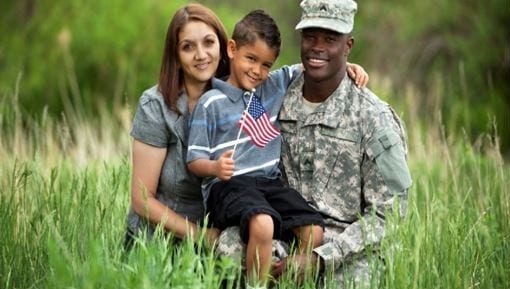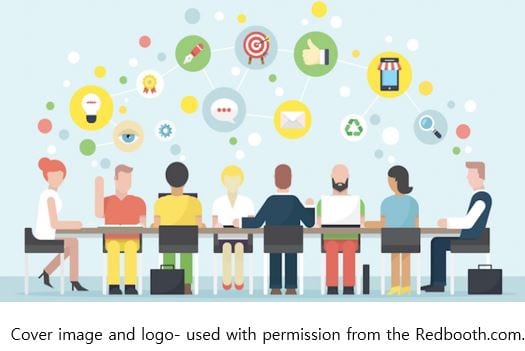By: Jennifer Rea, PhD
Today’s military families are diverse. Military families themselves come in many forms, including their structure (e.g., single-parent families; dual-service families) as well as their experience with military life (e.g., new to the military vs. 10+ years of experience). “Moreover, military families’ needs change over time as they move through personal and military life transitions” (Clever & Segal, 2013, p. 13).

used with permission by U of Texas at Austin
While they face a variety of challenges unique to military life, military families are resilient. They possess a variety of assets, and are able to tap into protective resources to overcome various life adversities (Masten, 2018).
One specific resource that helps support resilience in military families is the Military Family Service Provider (MFSP). A MFSP is a professional who assists Service members and their families through sharing resources and information to navigate military life. For example, a MFSP may work at a Fleet and Family Support Center where they provide workshops to help military families with transition assistance. Due to limited availability and allocation of resources, MFSPs may find that they are not able to support military families at the level they would like.
Findings from a recent survey of more than 7,000 respondents highlighted a lack of coordination and communication among military service providers. For instance, one Service member reflected that “if it is not about their [service provider’s] program, they don’t really know to tell you where to go” (Sims et al., 2018, p. 55). If service providers know only about the resources they provide, they are likely limiting their outreach. This may leave military families feeling misdirected, prolonging the process in receiving necessary services (Miller et al., 2011). It may also completely discourage them from using resources altogether.
Therefore, it is likely that more coordination of efforts across resources and platforms of care may be needed to support the diverse military families of today (Ainspan, Penk, & Kearney, 2018). As Clever and Segal (2013) reflect, “the best programs and policies to help Service members and families are flexible and adaptable rather than rigidly structured” (p. 13). Thus, the resources provided within these programs should also be versatile and relevant to meet military family needs. To do this, we as professionals may need to provide support and share resources that are outside our areas of expertise as we help military families navigate life cycle transitions.
This type of change requires  collaboration across all boundaries, whether those boundaries are office doors, installations, communities, organizations, or agencies. That is, as professionals we must re-think the way we work with Servicemembers and families—working smarter, not harder. Because…
collaboration across all boundaries, whether those boundaries are office doors, installations, communities, organizations, or agencies. That is, as professionals we must re-think the way we work with Servicemembers and families—working smarter, not harder. Because…
No single individual, agency, or community is capable of addressing all military family life matters alone.
Becoming a collaborative professional, organization, and agency means breaking down siloes and building networks. Specifically, taking a “collaborative stance” involves bringing together all stakeholders to share voices and expertise—with the common goal of increasing outreach to support the well-being of military families.
But what exactly does increasing outreach, building networks, and collaboration look like?
Here are some helpful strategies Military Family Service Providers can take to deliver more comprehensive support for the military families we serve:
1. Begin by meeting military families where they are. Start by asking them what their specific needs are as the resources required to support their family well-being may differ tremendously.
- For example, you might ask Service members and families if they would be interested in sharing a few successes as well as challenges they have experienced in using resources in your area.
2. Develop a standard knowledge base of resources that are available to military families on- and off-military installations.
- An example: Develop a short, but comprehensive, list of resources for military families to help them navigate a new duty station. This one-page resource sheet might include contact names and numbers for Relocation Assistance Program staff or moving companies in the area. *Try to update this resource list quarterly.
3. If you haven’t already… Connect with local community organizations. They have an on-the-ground understanding of unique community challenges and can likely share what resources are commonly used or needed. For example, you may help military mothers of young children get integrated into their community by finding a local MOPS (Mothers of Preschoolers) group.
- Here is an excellent tool, Military Installations, from Military OneSource that can assist you in locating local resources for the military families you serve.
4. Next, partner with private and nonprofit organizations. These organizations are often flexible, agile and are already filling support and service gaps.
- For example, the Navy-Marine Corps Relief Society could reach the military families you serve by providing further financial and educational support.
5. Expand support networks and link Service members and families to existing state sponsored policies, programs and services that meet the challenges they face.
- To assist you in identifying and addressing the most pressing needs of Service members and families affected by state policies, check out this resource by Military OneSource.
6. Engage in proactive collaboration across service providers to create a more robust and less intimidating network of resources. For instance, you might research organizations that serve the same population. Together, your organizations can serve military families, providing them with a spectrum of resources—from financial assistance to information on childcare.
This strategy will be especially helpful in times of transition because you have gone the extra step to ensure resources are readily available for Service members and their families. It may also limit the stress families experience by helping them to know which organizations or service providers to call or where to go for support.
7. Incorporate regular communication to build a network of support and create a team-based approach to addressing matters relevant to Service members and their families.
- It’s imperative that you continue to have conversations with your partners—sharing information about information, resources, and common challenges your populations are facing and how teaming up might make for a broader outreach and impact.
8. Build trust. The best partnerships are built upon honesty and trust. To build trust among other service providers and organizations, it’s important to first understand that “trust is a relationship established between a trustor and a trustee. It takes two to tango, and two to trust” (Green, 2012).
One strategy to build trust with another like-minded organization would be to do small projects together. Then, once each project is complete, follow-up by sharing your perspectives on the overall experience.
9. Be open to others’ perspectives. This involves listening carefully to understand others’ views, even if they are completely opposite from your own views (Linden, 2013).
- It is vital to remember the reason behind your collaboration with other service providers—keeping in mind that the common goal is to support military families.
10. Think systemically and connect the project to a larger purpose. Each service provider must be driven to and have a passion for achieving the “initial goal” (Linden, 2013).
- The goal of collaboration should be all about promoting the well-being of Service members and families. It is also about working strategically in support of the military families we serve.
In some, collaboration involves integrating into the military community—where military families live, work, and play—and promoting military family resilience through a process of exchanging information, building relationships, and developing trust among informal (e.g., friends) and formal (e.g., organizations) networks.
For more information and resources on ways to become a more collaborative professional, organization or agency be sure to participate in our upcoming virtual conference. The Relationships for Readiness OneOp 2019 Virtual Conference is a free 3-day (September 17-19) event that invites military family service providers, Extension educators, and others who work with military families to rethink the way they work with military families by re-aligning themselves as connected and collaborative professionals, organizations, and agencies. Of special interest is the session “Collaboration Across Boundaries”, where facilitator Russ Linden will discuss the collaboration mindset. Note: the virtual conference webinar sessions will be archived and available for viewing following the event.
References
1. Ainspan, N. D., Penk, W., & Kearney, L. K. (2018). Psychosocial approaches to improving the military-to-civilian transition process. Psychological Services, 15(2), 129-134.
2. Clever, M., & Segal, D. R. (2013). The demographics of military children and families. The Future of Children, 23(2), 13-39.
3. Green, C. (2012, April 3). Why Trust is the New Core of Leadership. Retrieved from https://www.forbes.com/sites/trustedadvisor/2012/04/03/why-trust-is-the-new-core-of-leadership/#3f2b47ea645a
4. Linden, R. (2013). Abraham Lincoln and the Art of Collaborative Leadership. Retrieved from https://www.questia.com/library/journal/1G1-334606599/abraham-lincoln-and-the-art-of-collaborative-leadership
5. Masten, A. S. (2018). Resilience theory and research on children and families: Past, present, and promise. Journal of Family Theory & Review, 10(1), 12-31.
6. Miller, L. L., Rostker, B. D., Burns, R. M., Barnes-Proby, D., Lara-Cinisomo, S. & West, T. R. (2018). A New Approach for Assessing the Needs of Service Members and Their Families. Santa Monica, Calif.: RAND Corporation, MG-1124-OSD, 2011. Available: https://www.rand.org/pubs/monographs/MG1124.html
7. Sims, C. S., Trail, T. E., Chen, E. K., Meza, E., Roshan, P. and Lachman, B. E. (2018). Assessing the Needs of Soldiers and their Families at the Garrison Level. Santa Monica, CA: RAND Corporation. Available: https://www.rand.org/content/dam/rand/pubs/research_reports/RR2100/RR2148/RAND_RR2148.pdf
Writers Biography
 Jenny Rea, Ph.D., is a military spouse and mom of four kiddos under six years. Jenny consults with OneOp and is an Assistant Professor of Practice in the Department of Human Services and Director of the Certificate in Military Families at the University of Arizona.
Jenny Rea, Ph.D., is a military spouse and mom of four kiddos under six years. Jenny consults with OneOp and is an Assistant Professor of Practice in the Department of Human Services and Director of the Certificate in Military Families at the University of Arizona.















